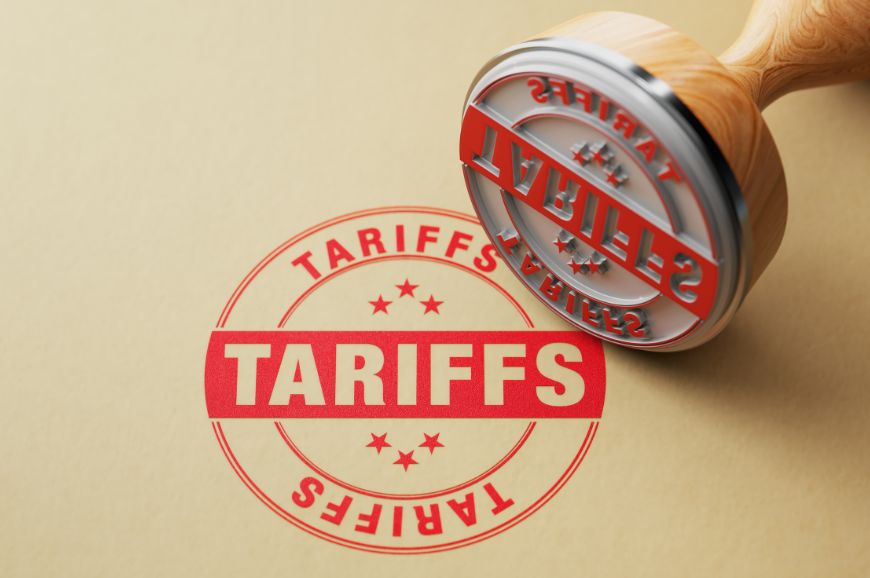Economic turbulence is not something new. We are witnesses of numerous inflationary pressures, rising interest rates, and other supply chain disruptions right now. All of these can mean only one thing, a volatile market.
And the latest update in this volatile market?
The shift in US politics with the winning of Donald Trump. The instrument is the potential tariffs, which might have widespread implications for international trade and business operations.
For every company that relies on global supply chains, these trade shifts are much more than just an increase in costs. They show uncertainty that can disrupt planning, cash flow, and supplier relationships.
And here lies the key to success.
In fact, successful companies will know how to handle this changing landscape, and they will be the ones that will remain on the competitive side.
On the other hand, when it comes to leadership, the most important thing is the anticipation tactics that will give your company a space to breathe a little.
And now, with the new tariffs taking shape, companies should make an entire reevaluation of their sourcing strategies, so they can ensure their supply chains will remain financially stable.
The Ripple Effect of New U.S. Tariffs over the Working Capital
The recent proposals for new U.S. tariffs under President Donald Trump’s administration will undoubtedly have significant implications across various sectors and global supply chains.
But let’s see why in this overview.
The administration has signaled intentions to implement a 25% tariff on imports from Canada and Mexico, alongside a 10% tariff on goods from China. Additionally, a universal baseline tariff ranging from 10% to 20% on all imports is under consideration.
Specific products, including semiconductors, pharmaceuticals, metals like aluminum and copper, and automobiles, are also targeted. These measures are estimated to affect industries such as automotive manufacturing, electronics, textiles, and agriculture, leading to potential cost increases for both businesses and consumers. In the geopolitics arena, these tariffs could strain relations with key trading partners and may prompt reciprocal actions, further complicating international trade dynamics.
Broader Impact on Supply Chains
These tariffs are expected to disrupt established supply chains, especially companies that source materials or products from the affected regions. For instance, the automotive industry, which relies heavily on integrated supply chains across North America, may face increased costs for vehicles and parts. Equally, the tech sector could encounter higher expenses due to tariffs on semiconductors and electronic components sourced from China and Taiwan. These disruptions may lead to delays, increased operational costs, and the need for businesses to seek alternative suppliers or adjust their sourcing strategies.
Reassessing Sourcing Strategies and Diversifying Supply Chains
In response to the anticipated tariff impacts, businesses should proactively reassess their sourcing strategies to mitigate potential disruptions. Diversifying supply chains by exploring alternative suppliers in regions with lower or no tariffs can help reduce reliance on any single source. Additionally, considering nearshoring or reshoring options may enhance supply chain resilience and reduce exposure to tariff-related risks. Implementing comprehensive risk assessments and developing contingency plans are crucial steps in navigating the evolving trade landscape.
Resilient Leadership in Economic Uncertainty
Economic turbulence is a test of leadership. The ability to make strategic decisions under pressure separates businesses that survive from those that thrive. In times of uncertainty, leaders must focus on three core principles: agility, data-driven decision-making, and proactive risk management.

Do you find this article interesting?
Subscribe to our Newsletter for updates on the latest blog articles.
Agility as a Competitive Advantage
Rigid business models don’t survive economic shocks. Companies that can quickly pivot—whether by adjusting supply chains, renegotiating contracts, or securing alternative financing—are more likely to maintain stability. This requires fostering a culture of adaptability across all levels of an organisation.
Data-Driven Risk Management
Successful leaders don’t wait for disruptions to happen—they anticipate them. By leveraging predictive analytics, market intelligence, and real-time financial data, businesses can identify vulnerabilities before they turn into crises. This means:
- Monitoring geopolitical and trade developments to anticipate tariff changes.
- Conducting stress tests to understand how new costs will impact profitability.
- Diversifying supplier relationships to reduce dependence on any single region.
Learning from the Past
The 2018 U.S.-China trade war forced many manufacturers to reassess their supply chains. Some businesses that depended on Chinese imports struggled, while those that had diversified suppliers across Southeast Asia maintained stability. The lesson? Companies that build redundancy into their supply chains before a crisis hits are better positioned to weather disruptions.
At a time when new tariffs are likely to reshape global trade flows, businesses that act now—rather than react later—will be the potential winners in the game.
Working Capital & Liquidity as Shields Against Volatility
In unpredictable markets like this, cash flow is the most important thing a company has. Economic downturns and trade disruptions expose weaknesses in working capital management, leaving businesses scrambling for liquidity. To remain resilient, companies must prioritise financial flexibility.
The High Cost of Inaction
When supply chain disruptions hit, businesses without strong liquidity are forced into tough choices: delaying supplier payments, cutting operational costs, or turning to expensive short-term financing. Each of these options weakens long-term stability.
Optimising Working Capital
To shield against economic shocks, companies should:
- Improve payment terms: Negotiating extended payment windows with suppliers while accelerating receivables can help free up cash.
- Enhance cash flow forecasting: Predicting short-term liquidity needs ensures companies aren’t caught off guard.
- Leverage financial technology: Automated cash management tools and digital financing solutions provide greater control over liquidity.
What does this mean for Supply Chain Finance?
Rather than absorbing cost increases or squeezing suppliers, companies can use supply chain finance (SCF) to maintain stability. SCF solutions allow suppliers to access early payments without financial strain on buyers, ensuring continuity even amid economic uncertainty, especially with the new US tariffs on the horizon.
Easing Cash Flow Constraints
Higher tariffs mean increased costs for imported goods and materials, which can strain cash flow, particularly for companies with tight margins. SCF solutions, such as early payment programs or invoice financing, allow suppliers to get paid sooner while buyers can extend payment terms, ensuring liquidity is maintained despite rising costs.
Reducing Working Capital Pressure
Businesses that need to source goods from new suppliers due to tariffs may face higher upfront costs. SCF enables companies to optimise working capital by unlocking cash trapped in supply chains, helping them fund alternative sourcing strategies without disrupting operations.
Supporting Supplier Stability
Tariffs can cause financial stress for suppliers, particularly smaller ones that may struggle with higher costs or delays. SCF programs offer suppliers access to affordable financing, reducing their reliance on expensive loans and ensuring they can continue to meet demand despite market disruptions.
Enhancing Supplier Diversification Efforts
As companies look to shift sourcing to lower-tariff regions, SCF can smooth the transition by providing financial support to new suppliers. Buyers can use SCF to strengthen relationships with alternative vendors, ensuring reliability and stability in the new supply chain.
Reducing Dependence on Expensive Credit
Many businesses resort to costly bank loans or credit lines to cover tariff-related expenses. SCF offers a more efficient alternative by leveraging the strength of buyer credit ratings to secure better financing terms, keeping capital costs under control.
Providing Flexibility in Trade Terms
With new tariffs, traditional payment terms may become unsustainable. SCF allows companies to renegotiate trade terms with suppliers while ensuring payments are still made on time, preventing supply chain disruptions and maintaining business continuity.
Liquidity is power. Businesses that optimise cash flow and working capital today will have the financial strength to navigate economic turbulence without making desperate compromises.


